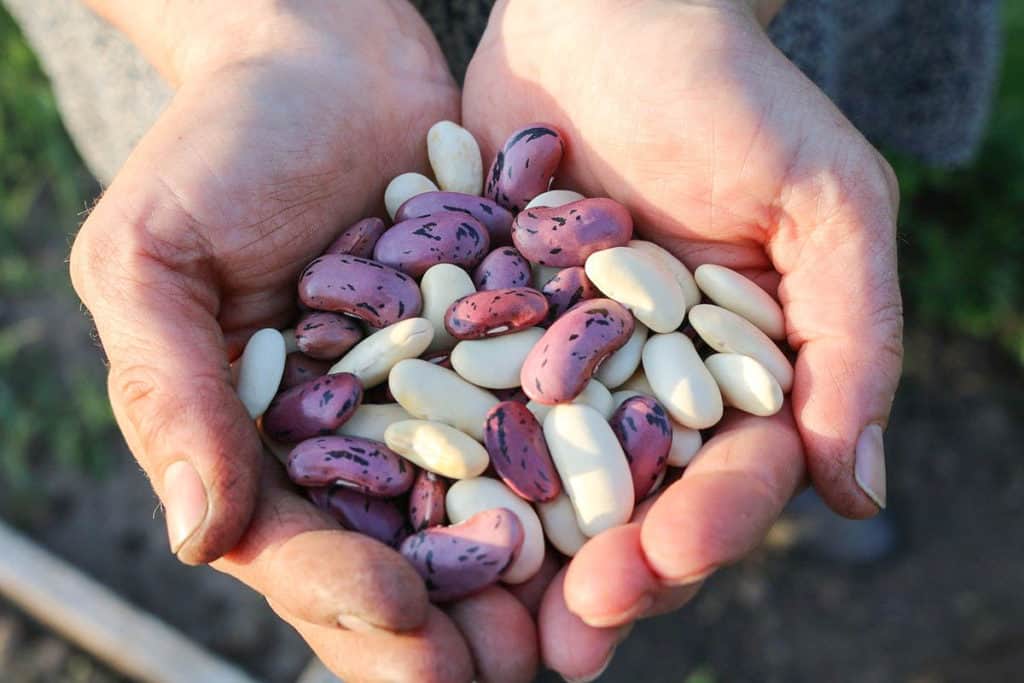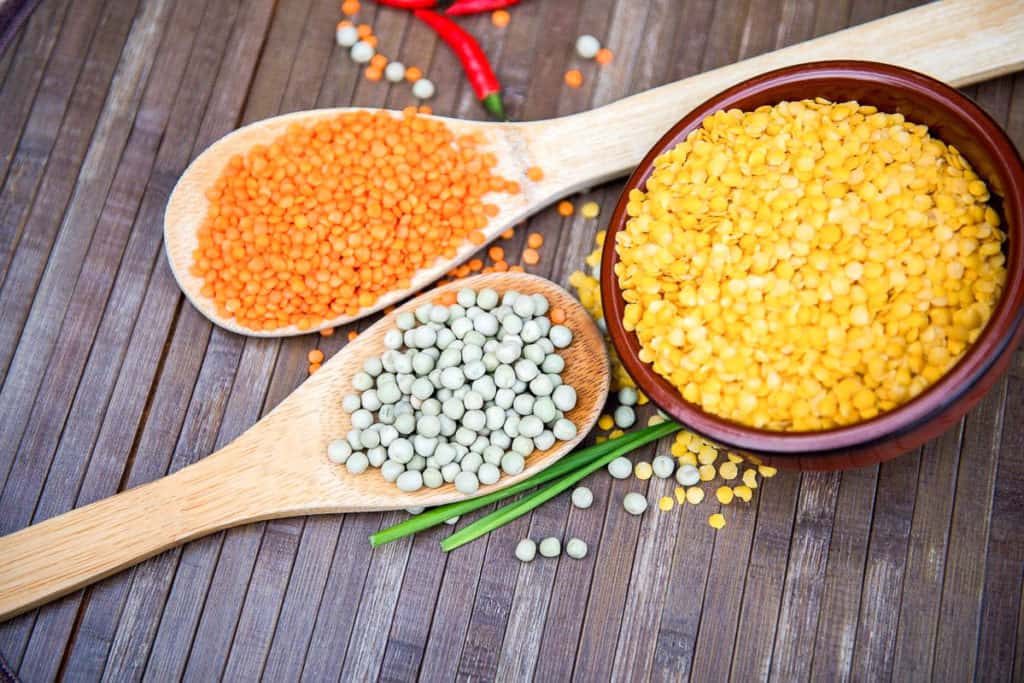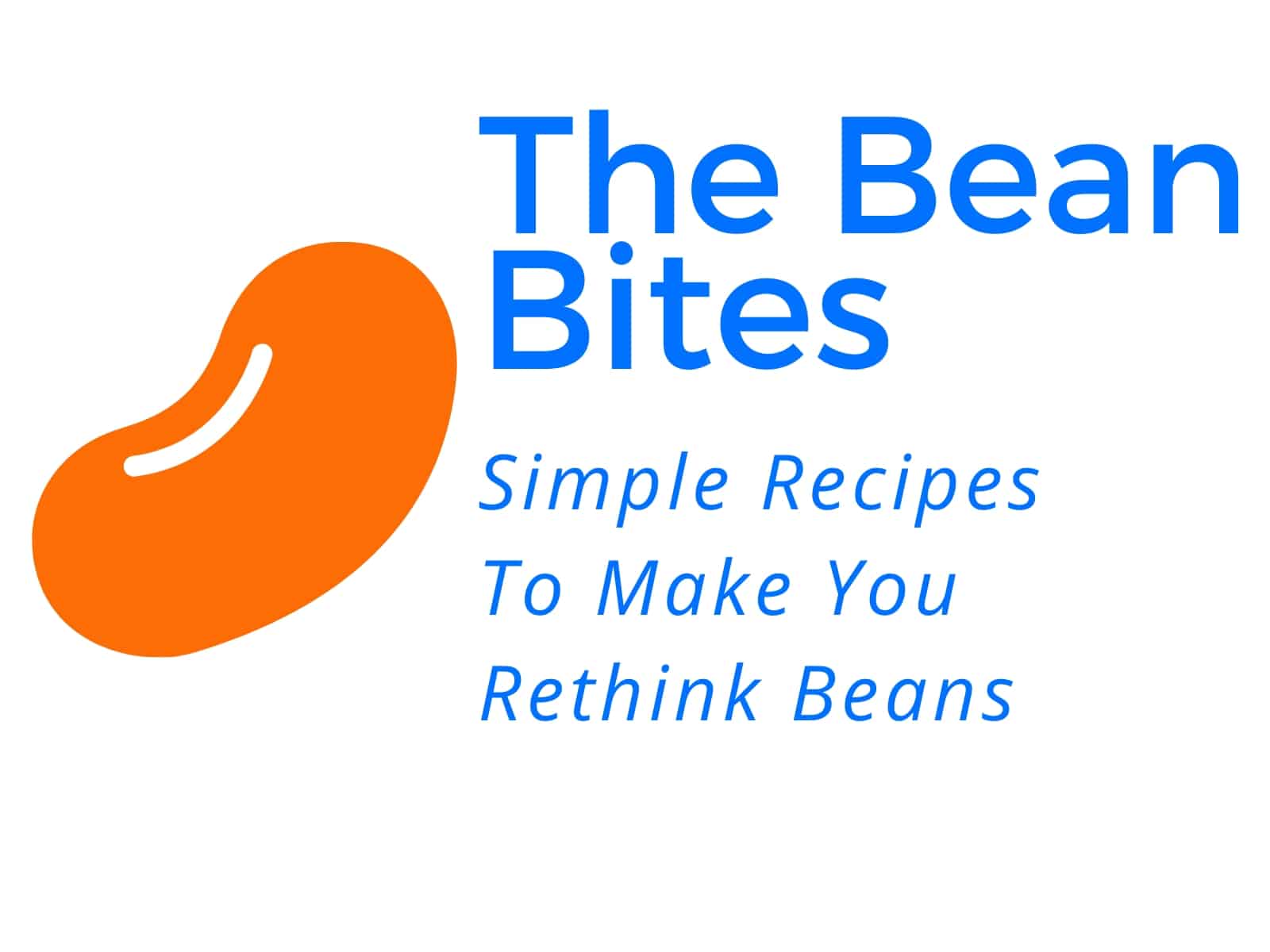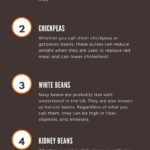As much as this site is called The Bean Bites, there’s more to the bean world than just plain ol’ beans. When it comes to healthier eating and the variety of recipes out there there are three words that come up a lot – beans, legumes, and pulses. In this post, we share tips and information on the best beans to eat. And, we define what are legumes and pulses.
What Is A Legume
Legumes are the edible plants that grow in pods. Examples of legumes include green beans, edamame, and snow peas. Peanuts are also considered legumes.
What Is A Pulse
Pulses are the edible, dried seeds of plants in the legume family. They grow in pods. Pulses are the seeds that come from inside these pods.
There are 11 types of pulses that have been identified by the United Nations. They include dry beans, dry broad beans, dry peas, chickpeas, cowpeas, pigeon peas, lentils, Bambara beans, vetches, lupins, and pulses nes. Pulses nes are other minor types of pulses that don’t fit within the other categories.
Whereas legumes are consumed fresh and often green, pulses are always dried seeds that are then reconstituted.
Learn more about pulses here.
What Is A Bean
A bean is a type of pulse. Yes, it’s just that simple. There are so many different types of beans. They can be purchased dried or canned.

What Are The Best Beans To Eat
Regardless of what you call them, beans, pulses, and lentils are a great addition to a well-rounded diet. Here are some of the most popular pulses and legumes to eat. We also include some of the benefits of eating these beans.
Check out our post on the Benefits of Eating Beans and our recommendations for The Best Healthy Bean Recipes.
Kidney Beans
People in the US probably think of kidney beans first when the topic of beans comes up (do people talk about beans? We do!). They are one of the most commonly eaten beans. Whether served in chili, stews, or with rice, they are packed with fiber and high in protein. They can help to reduce blood sugar levels too.
Chickpeas Or Garbanzo Beans
Whether you call them chickpeas or garbanzo beans, these pulses are a great source of fiber and are high in protein. They can reduce weight when they are used to replace red meat. They can also help to lower cholesterol. They are commonly found in Mediterranean diets and in Indian dishes as well.
Black Beans
Black Beans are most commonly found in dishes from South America and Central America. But, in recent decades they have become a staple of diets across the US. They are high in protein, fiber, and folate. Black beans can easily be added to so many dishes from salads to soups to stir-fries. Just throw in a cup or two of black beans to add protein.
Beef And Black Beans With Pumpkin
Pinto Beans
For a bean novice, they might get pinto beans and kidney beans confused. Pinto beans are slightly smaller and less red in color than kidney beans. They are probably most commonly used in Mexican and Latin American dishes. They are the base for the common side dish known as refried beans but they can be used in loads of other ways as well. They are high in protein and may help to reduce cholesterol.
The Best Instant Pot Pinto Bean Recipes
Navy Beans
Navy beans are probably less well understood in the US. They are also known as haricot beans. Regardless of what you call them, they can be high in fiber, vitamins, and minerals.

Lentils
Lentils are a type of pulse. Many cooks in the US might overlook lentils when searching for recipes. Or they might think that lentils are hard to cook. This couldn’t be further from the truth. There are so many different kinds of lentils. They can be purchased dry or cooked in jars. Even when purchased dry they are actually easier to cook than beans.
Lentils feature heavily in Indian cuisine. There are also loads of great soups and stews from Spain and other Mediterranean countries that use lentils.
Lentils are a great alternative source of protein and can reduce cholesterol levels. Lentils are great for gut health too.
Peas
Green peas are a type of legume. There are different types of peas that have different health benefits. They are a good source of protein and fiber. Although on this food blog we focus on using fresh peas in recipes, you can also use things like pea flour as an alternative to wheat flour. There are other types of peas that are dry peas and part of the pulse family.
Soybeans
Of all the beans, this food blog probably covers soybeans the least. Soybeans and soy products tend to be the main source of proteins for many vegans and vegetarians. But, they are not the same kind of beans as others on this list because in their natural form they aren’t something you build a recipe around. In addition to soy-based products like soy milk most people consume soybeans as tofu.
Eric just doesn’t like tofu, so it is not something we commonly cook at home. It’s one of the reasons why we’ve tried to find other ways to create recipes and dishes with beans.
Peanuts
Yes, peanuts are legumes, which places them in the bean family. There are a lot of health benefits to eating peanuts, but obviously there are a lot of people with peanut allergies. I will never sneak peanuts into a recipe on this site without clearly marking it.
That said, we love adding peanuts to a lot of our recipes as an additional source of protein. This is particularly true with Thai dishes. Peanuts don’t have the same high fiber content, though, like other beans on this list.
FAQs – What Are The Best Beans To Eat
On average, beans provide between 30-35% of the daily recommended amount of protein. There are other beans namely, boiled soybeans which provide 60% of the daily recommended amount of protein. Other high-protein beans worth eating include white beans, pinto beans, and kidney beans.
Canned beans are convenient to use and last a long time. They are healthy so long as ingredients like sugar or salt are not included. When possible, it’s best to use dry beans. They are free from additives and generally more healthy compared to canned beans.
Two of the most popular beans, pinto and black beans are not only versatile but also nutritious. In terms of which is more healthy, the consensus is they are equally healthy. Both are high in fiber and protein. Both produce healthy gut bacteria, vital is reducing belly fat. They provide essential nutrients including calcium, for bone health.

